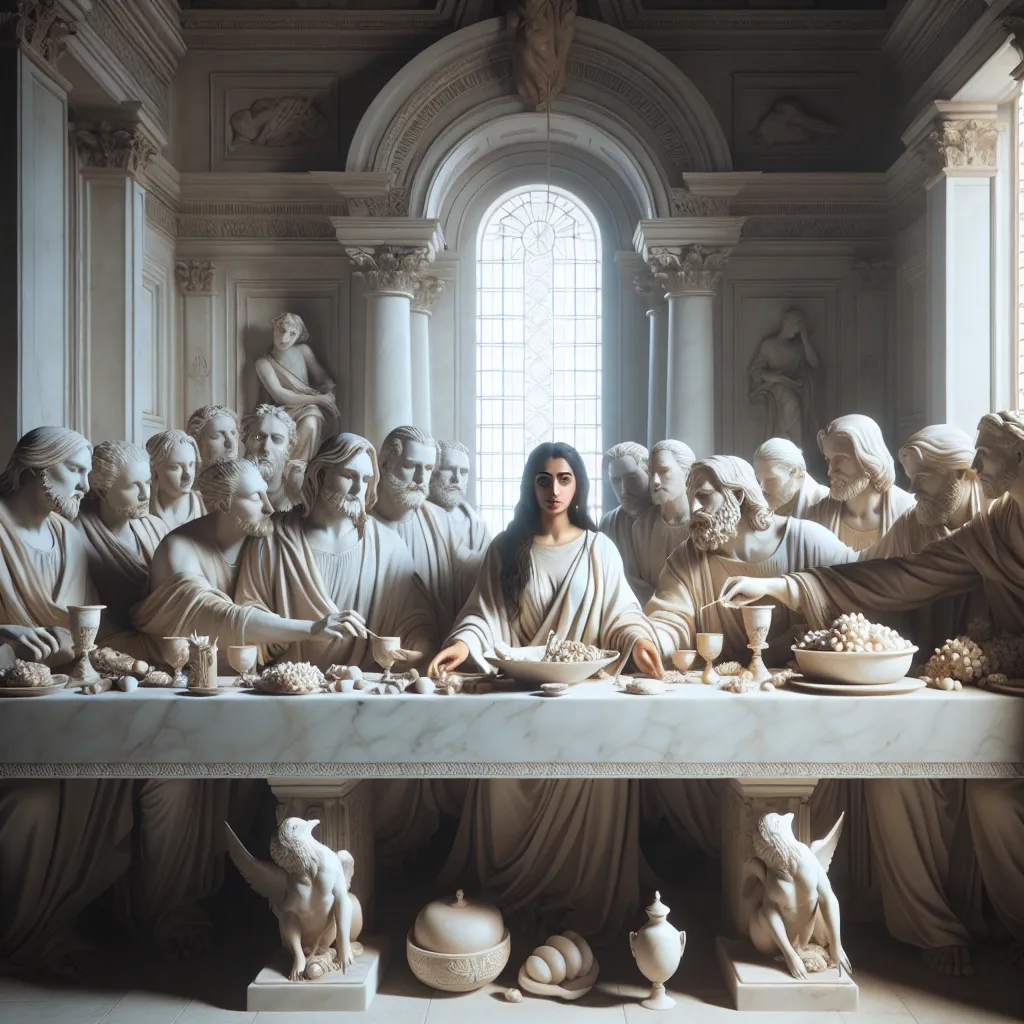
- Published on
- Authors

- Name
- You
The Last Supper: Ritual and Symbolism in Christian Mysticism
The Last Supper stands not only as a pivotal moment in Christian tradition but also as an intricate ritual rich with symbolism and mystical insights. This sacred event, often portrayed in art and commemorated in liturgy, merges deep spiritual significance with ancient magickal practices.
Historical Context
The Last Supper took place during Passover, a time laden with Jewish ritual and symbolism. Jesus gathered his disciples to share a meal that has since become a cornerstone of Christian liturgical life.
| Element | Historical Reference | Symbolic Meaning |
|---|---|---|
| Bread | Passover unleavened bread | Body of Christ, sustenance |
| Wine | Traditional Passover wine | Blood of Christ, sacrifice |
| Washing of Feet | Ancient hospitality ritual | Humility, purification |
Symbolic Elements
Bread and Wine
The bread and wine used during the Last Supper are more than mere food and drink. In Christian theology, they transform into the body and blood of Christ during the Eucharist, a process known as transubstantiation.
- Bread: Represents Jesus' body, broken for humanity. It signifies sustenance and the idea of Jesus as the "Bread of Life."
- Wine: Symbolizes Jesus' blood, shed for the forgiveness of sins, creating a new covenant between God and humanity.
The Act of Sharing
The communal aspect of the Last Supper underscores the unity and fellowship among the followers of Christ. This act of sharing bread and wine invites participants into a mystical communion, fostering a profound connection with the divine.
Mystical and Magickal Interpretations
In Christian mysticism, the Last Supper and its reenactment, the Eucharist, are viewed as sacred mysteries that transcend ordinary reality. Various Christian mystics have described mystical experiences during the Eucharist, often involving visions or profound spiritual insights.
The Eucharist as Alchemical Transformation
The Eucharist can be interpreted through the lens of alchemy:
- Prima Materia (First Matter): The simple bread and wine.
- Transmutation: The priest's invocation acts as the catalyst, paralleling the Alchemists work in transforming base materials.
- Philosophers Stone: The Eucharist becomes the elixir of life, offering spiritual immortality.
Modern Scientific Parallels
Recent advancements in quantum physics and neuroscience provide intriguing parallels to the mystical experiences described by early Christians.
- Quantum Entanglement: Just as particles can be entangled across vast distances, the Eucharist symbolizes a profound interconnectedness between believers and the divine.
- Neuroscience of Ritual: Studies show how ritualistic behavior can alter brain states, facilitating transcendental experiences. The repetition and symbolism of the Eucharist can create meditative states that enhance spiritual perception.
Concluding Reflections
The Last Supper, with its layers of historical, symbolic, and mystical significance, serves as a bridge between the mundane and the divine. Whether approached from a religious, mystical, or scientific viewpoint, it continues to offer rich opportunities for exploration and understanding.
In celebrating the Eucharist, contemporary believers participate in an ancient ritual that not only commemorates historical events but also invites them into a deeper, transformative relationship with the divine.
May the mysteries of the Last Supper continue to inspire and elevate those who seek to understand its profound depths.
Feel free to share your thoughts or further questions on this topic in the comments below!
